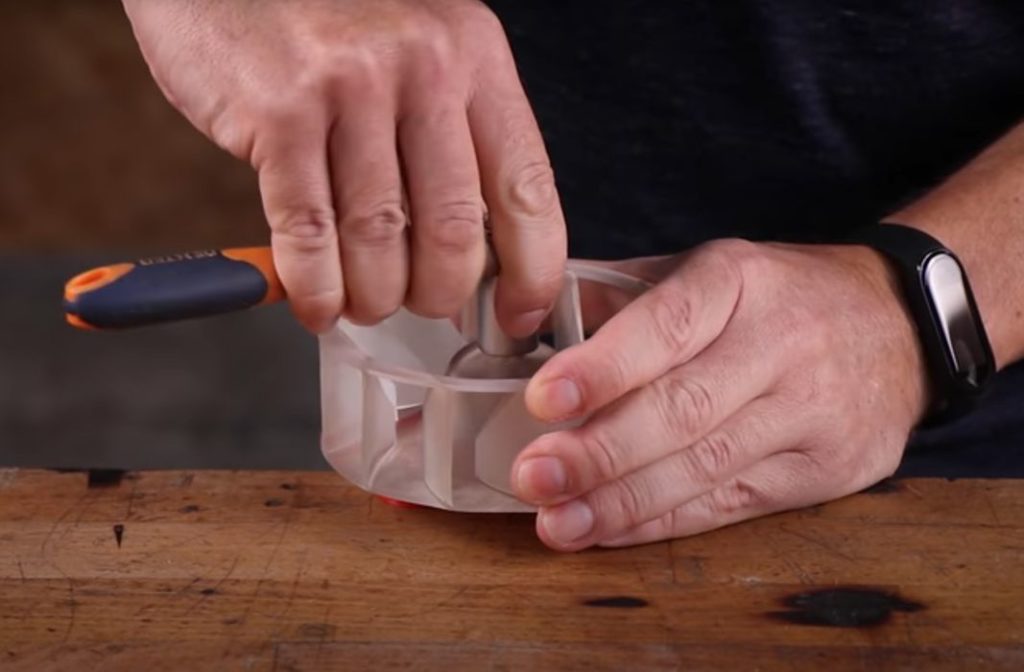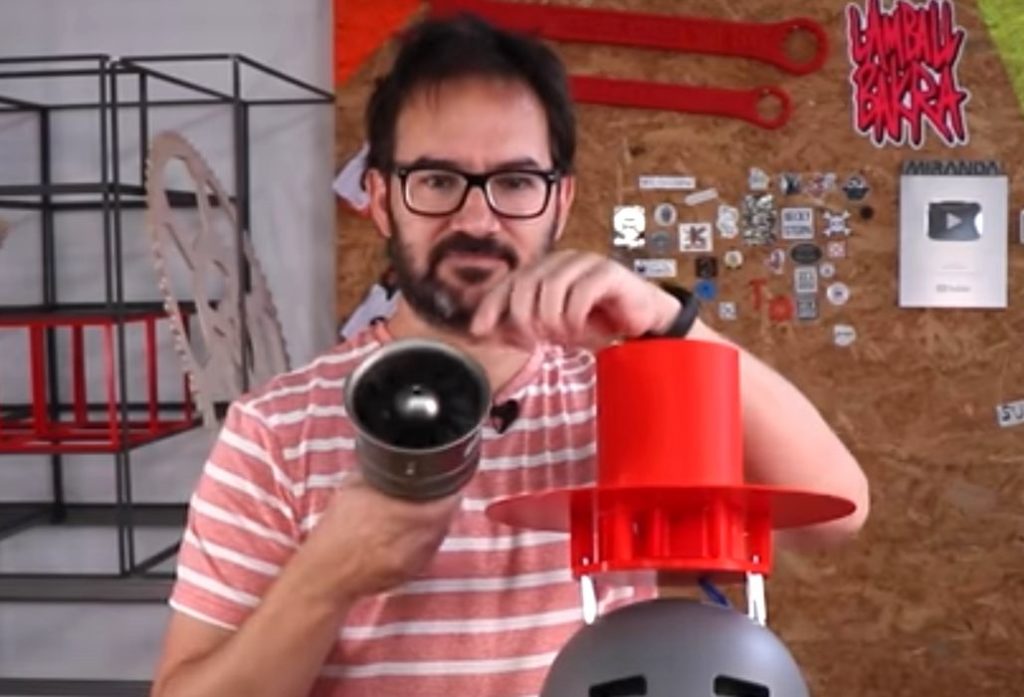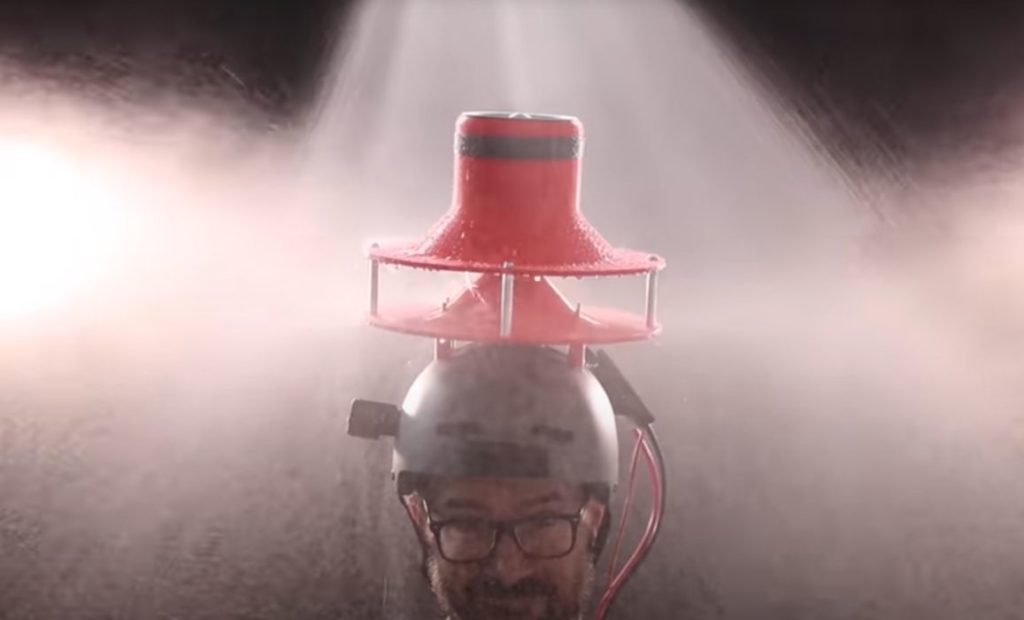
This week’s selection is the totally impractical Turbine Umbrella Hat by 3D print enthusiast Ivan Miranda.
Spain-based Miranda operates a YouTube channel where he repeatedly builds rather unusual projects, usually involving 3D printing. Among his previous projects are a Sand Drawing Robot, Giant Nerf Bazooka, All Terrain Skateboard, and even a 3D printed tank you can drive.
His latest project is a questionable one: a Turbine Umbrella Hat to blow away rain before it lands on you.
For some unexplainable reason, Miranda was unsatisfied with the common umbrella design, a method of deflecting rain successfully used for at least 4000 years.
His concept was to engage a powerful wind turbine that could blast air sideways to alter rain’s downward trajectory away from the hat wearer.
While a bit unusual, it would seem that such an approach could actually work. Miranda set out to build this item using 3D printed parts.

His first attempt failed miserably, when he realized that the 3D printed turbine blades were not sufficiently strong nor accurate enough to spin properly. Evidently high powered machines require parts with considerably more tolerance.
Miranda eventually 3D printed a turbine that was stable, and he constructed a housing that mounted onto a bike helmet. While the hat appeared to be working during initial testing, there was a major problem. Even though the turbine was 3D printed in sufficient accuracy to spin without exploding, it was still unbalanced.

This meant the helmet would vibrate at a high frequency as the turbine spun around the axis. In the video, Miranda appears quite dazed after removing the helmet. Clearly another approach was required.

To avoid the complications of inaccurate 3D printed machine parts, Miranda then acquired a small electrically-powered turbine. This purpose-built engine includes parts of sufficient tolerance to withstand high RPMs, unlike his previous 3D printed versions.

Still, the hat did not work very well. Miranda determined that the area of inflow was smaller than the area of outflow, suggesting that the airspeed would be reduced, and consequently its rain-removing capabilities.
To resolve this dilemma, Miranda shrunk the exit flow area to be the approximately the same as the turbine input port. This provided a massive gain in airspeed, sufficient to blast rain far away.
While the Turbine Hat did actually work, there are several issues with this design:
- It’s incredibly noisy and the wearer (and their friends) must all wear ear protection
- The battery powering the turbine will quickly wear out and a long rainstorm would result in a wet hat owner
- The hat would be less protective if the head was tipped one way or another, which is likely to happen sooner or later
- Finally, it looks a bit crazy, which may scare away anyone nearby
Regardless of the issues mentioned above, the Turbine Umbrella Hat is a fascinating design and in particular design process. Miranda was stopped at several points and had to rework his design to overcome real problems, and he did so successfully. And it’s fun.
Here the journey is perhaps more valuable than the end product.
Those that attempt to build something similar will likely be less wet, but perhaps find others running away, quickly.
Via YouTube

